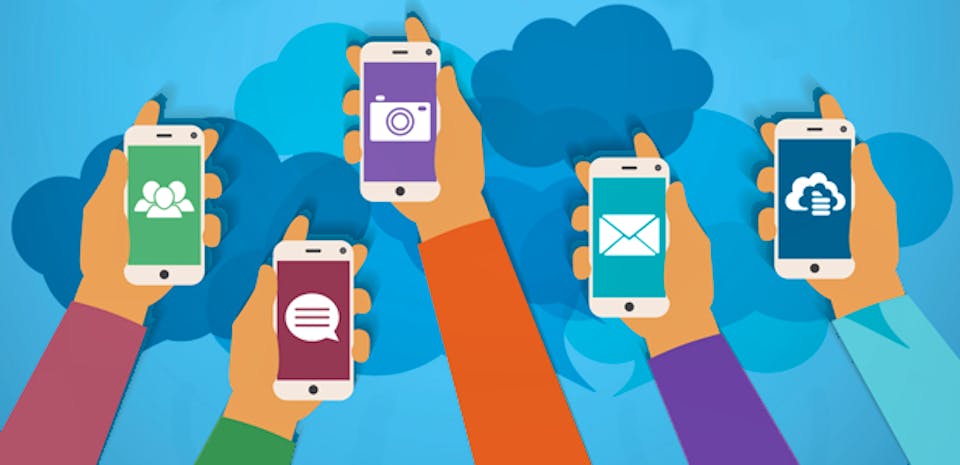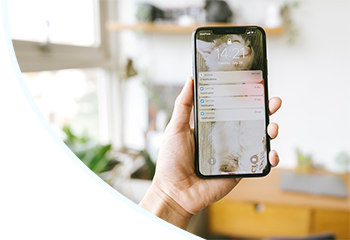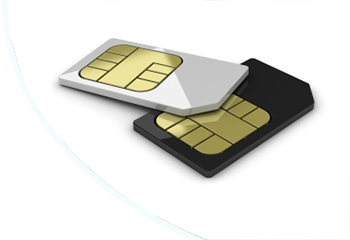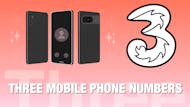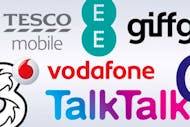Ensuring you've got the right amount of mobile data to support your particular usage habits not only means you’ve got enough to enjoy activities like streaming Netflix without an internet connection, but also that you’re not needlessly paying out for something you're not using.
As it can be surprisingly difficult to work out exactly what that right amount is, it's not always immediately clear how much data different apps and tasks are using for example, our guide is here to help you figure that out.
What kind of data user are you?
Thinking about what you actually use your mobile data for and how often is a very quick and easy way to obtain a rough idea of the amount you’ll require a month.
Light data user – around 500Mb to 1GB a month
- Send and receive lots of text-only emails with no large attachments
- Browse the web for a couple of hours a day
- Enjoy some YouTube clips
- Regularly read through social media
- Never download large files but occasionally stream the odd episode of a TV series
Medium data user – around 1GB to 2GB a month
- Send and receive lots of text-only emails with a few large attachments
- Browse the web for a few hours a day
- Regularly interact with social media
- Watch a fair bit of YouTube and make a couple of downloads throughout the month
- Stream a few episodes of a TV series
Heavy data user – around 2GB or more a month
- Send and receive lots of text-only emails often with large attachments
- Browse the web for a few hours a day
- Interact with social media multiple times throughout the day
- Watch quite a bit of YouTube clips and often download a lot of files
- Regularly stream music, films and multiple episodes of a TV series in one sitting
.jpg?w=960)
What smartphone activities use the most data?
Having a good understanding of how much data everyday smartphone activities use is also incredibly useful when it comes to calculating how much you’ll really need a month.
Browsing the web
One of the activities which requires the least amount of data, loading all kinds of different webpages only uses up about 23MB of data an hour.
Sending and receiving messages
Likewise, only a few MBs are required to send and receive both text-only emails and messages through online platforms like Whatsapp or Viber. Be wary of downloading lots of large video and picture attachments though as that could start to really eat up your data.
Video-calling
These types of services will run faster or slower depending if you’re on a 3G or 4G connection but generally speaking, the iPhone exclusive Facetime and Android friendly alternatives like Skype and Google Hangout need around 180MB of data for an hour-long one-to-one video call.
Using social media
Popular social media apps can actually be responsible for using up a surprising amount of your monthly mobile data allowance due to auto-playing video clips and your feed steadily refreshing itself in the background.
Facebook for example, can use up to 90MB an hour while the picture heavy Instagram can use up to 100MB which adds up to a little over a huge 2GB and 3GB a month respectively.
Streaming video
For many smartphone users, streaming video will the biggest drain on their data as enjoying an hour of Netflix in SD uses about 1GB of data and doing the same in HD uses up to 3GB an hour. Streaming in stunning 4K will use up even more, up to a staggering 7GB an hour.
How much data will I need if I’m going abroad?
Laws introduced back in June 2017 worked to scrap data roaming charges throughout 28 major EU countries, including France, Germany, Spain, Italy and The Netherlands, meaning you’re free to enjoy your normal data allowance without having to pay anything extra.
Charges will apply if you venture further abroad, but certain providers like O2 and EE offer a range of different international bolt-ons so you only have to pay a small fixed fee per day to access as much of your regular data allowance as you’d like.
